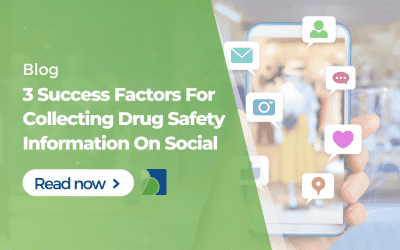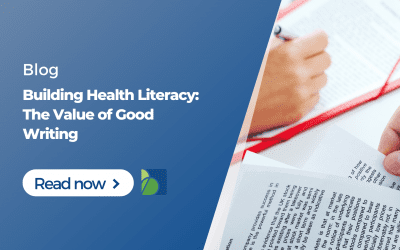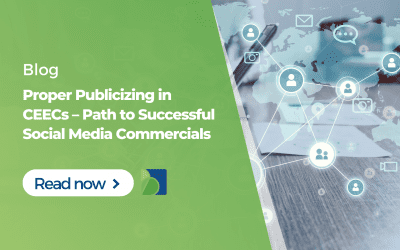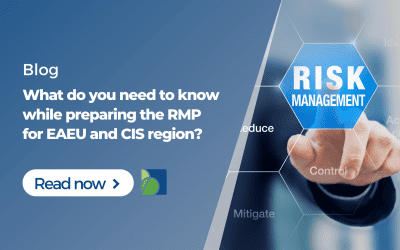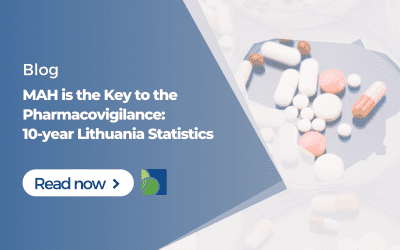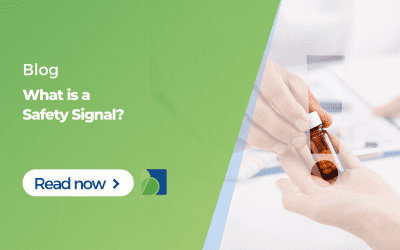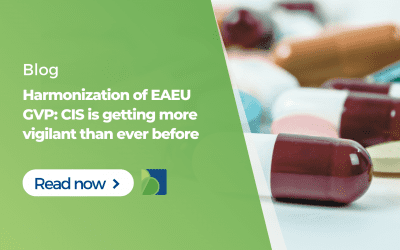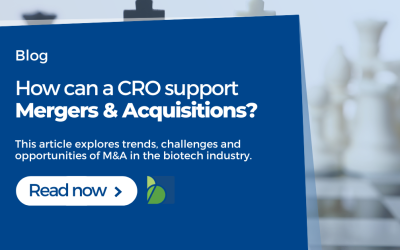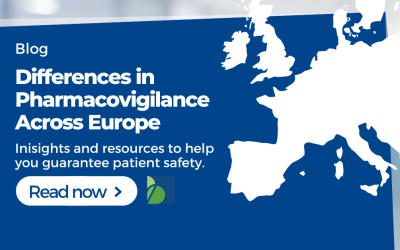
It is no secret that the evolution of evidence-based medicine and shared decision-making, and novel technologies have transformed how we share information and interact with Healthcare Professionals and Patients. The advances in automation, digitization, real-world evidence & Big Data analysis can empower Healthcare Professionals and patients with knowledge while upholding compliance with the relevant guidelines. All these elements change the way we look at medical information and communication. In addition, the introduction of new health information technology and innovation, and the systematization of best practices, can move medical information teams forward.
How do you turn Medical Information and Communication into a competitive advantage?
For that, we’ll take a step back and start at the beginning.
What is Medical Information?
A Medical Department of a Pharmaceutical company usually has a Medical Information division to provide scientific, product, and therapeutic-area expertise to Health Care Professionals (HCPs), patients, and payers to support them in making informed decisions. In addition, the medical Information division offers evidence-based, scientifically balanced information to unsolicited requests.
You can regard Medical Information as the foundation of post-approval product-usage understanding and compliance for drug products and medical devices. It provides the information and communication needs for products in a company’s portfolio and is mainly considered a time-consuming task that requires a sizable pool of scientific resources.
Medical Information professionals are highly qualified and trained in Scientific Writing and are Medical Affairs professionals by education in the pharmaceutical industry. Using their knowledge across diverse therapeutic areas and access to validated medical literature sources and data, prepare customized responses to medical queries, preferably at a speedy interval so a company can provide consistent real-time data on its products in different markets.
The medical Information team is in the centre of knowledge and expertise of its products and their therapeutic areas throughout the product lifecycle. The communication of accurate medical and scientific information is a vital aspect of a pharmaceutical organization and may include:
- Product use and administration;
- Off-label usage;
- Publications;
- Safety information;
- Data on file.
This importance is why Medical Information is worth being called a ‘Service’; it tends to customers’ needs, provides security, and respects their concerns.
Why do we need Medical Information?
Putting it formally, we need it because the authorities require it legally. Article 98 of Directive 2001/83/EC requires that ‘The marketing authorization holder shall establish, within his undertaking, a scientific service in charge of information about the medicinal products it places on the market.’
But, as the MI service is non-promotional in its nature, Healthcare Processionals recognize it as a value-adding service with clinical impact since high-quality and valuable information is provided that may not be publicly available. As a result, Health Care Professionals can consistently receive accurate information, even before a product is on the market.
Educating particular HCP audiences regarding a product’s risks-benefits through clinical and economic data companies enable them to make the appropriate decisions. Nevertheless, it is not only about HCPs. As patients currently tend to be more actively involved in decisions about their health care, access to precise & unbiased information is crucial.
Most Importantly, Medical Information teams are those contacted directly by external stakeholders. They are the key professionals to collect and analyze feedback received by HCPs, patients & payers and share insights with brand & medical teams to shape medical strategy and improve the patient experience with its products.
Is Medical Communication an evolution of Medical Information?
Pharmaceutical companies need to translate complex science and highlight clinical relevance to healthcare practice which means constantly communicating and educating healthcare professionals to facilitate continuous improvement of their patient care. Practically this can include, e.g., information regarding novel findings within a given therapeutic area or dissemination of new clinical trial data or Health Economics and Outcomes Research. Hence, the typical concept of Medical Information referring to gathering information, creating content, delivering responses, and analyzing insights is increasingly being used together with the term ‘Medical Communication’. It reflects the creation of strategic plans that enable the presentation and dissemination of this information effectively and appropriately for the target audience.
Medical Information & Communication professionals use the Medical Information data and insights to further support Medical Affairs departments to:
- Set up strategic communication plans
- Manage to publish new data
- Engage = experts and key opinion leaders(KOLs)
- Provide medical education
- Align internal communications
- Manage HCP events / advisory boards
In a highly competitive market, it’s a fact that many medicinal products or medical devices never reach the market or are removed from the market for reasons other than safety considerations. To prevent this, it’s vital to implement successful medical communication plans throughout the product lifecycle and to include the correct stakeholders at every stage to ensure an adequate scientific dialogue.
How have Medical Information & Communication evolved?
1. Increased scope of activities & exposure
Over the past years, the Medical Information role surpassed simply providing medical information to external stakeholders and maintaining up-to-date medical information material. Nowadays, Medical Information function also carries weight internally and includes involvement in, e.g.:
- Promotional material review;
- Material development for in-field roles;
- Creation of product launch tool kits;
- Developing training and educational materials;
- Medical Information Booths;
- Creating conference presentations and posters;
- Product-specific websites’ or company-sponsored websites’ content review for accuracy;
- Publications;
- Clinical trial activities.
As already mentioned, the contribution of Medical Information in shaping medical strategy and improving patient experience and outcomes with the company’s products is crucial. We could characterize Medical Information and Communication as the Face and the Voice of a company’s brand. They are the first to be contacted and those responsible for showing the company’s high-quality and professional level, advocating the patient-centric view, and improving its products’ safe and effective use.
2. Digitization in Medical Information & Communication
Increased adoption of digital channels in healthcare means emails or phone calls are not the only mainstream sources of Medical Information anymore; say hello to Medical Information self-service portals, video conferencing, social media, and online chats. Soon, these additional means of interaction will further expand the exchange of medical and scientific information with both HCPs and patients.
3. Increasingly complex products & heightened industry demands
With the rise of difficult-to-develop therapies like ATMPs and personalized medicines, multiple product indications, and increased off-label usage, the complexity in providing Medical Information analyses about them has risen equally fast, if not faster.
Simultaneously, staying ahead of the curve is an absolute must to be successful in the pharmaceutical industry. Combining these increased difficulties in bringing a new product to market with fluctuating demands across a therapy’s lifecycle with heightened demand and resource constraints can significantly stress operations. As a result, companies are expected to efficiently manage contact centre volume, triaging adverse and create response documents accurately, consistently, around the clock, globally. And, of course, cost-efficiently.
4. Turning medical information data into meaningful insights
We have to ask ourselves, what is the value that Medical Information activities offer a company to transform a legal requirement into a competitive advantage? The tremendous insights and outcomes Medical Information has to offer hold a strategic promise for pharmaceutical organizations and should be a pivotal partner in shaping the way we regard patient journeys. Its potential to help overcome hurdles on the way to marketing approval, identify new indications for clinical trials, and engage with the right key opinion leaders by analyzing their enquiries, is undeniable. Most importantly, identifying trending topics & insights and content usage metrics will reveal early the need to address safety, efficiency, or quality issues. Also, it helps determine the high-impact areas of focus on potential medical education, re-training, or product needs (e.g. formulation change).
5. Increased outsourcing in Medical Information & Communications
Despite the development of Medical Information practice and expanding scope this last decade, there is still a lack of awareness of Medical Information services among HCPs and consumers. Additionally, the lack of a Medical Communication Strategy within many Pharmaceutical companies to efficiently use Medical Information’s potential to obtain better care outcomes and exploit Big-Data to improve strategic decisions is lagging.
It may prove wise for organizations with insufficient resources or without in-house Medical Information expertise to seek support from experienced MI service providers. These vendors are equipped with advanced digital technology tools and staffed with highly educated professionals. In addition, the flexibility they offer to meet changing needs and make Medical Information Service a source of differentiation can make the difference between market failure and success.
3 Factors Affecting the Successful Collection of Drug Safety Information in Social Networking Sites
Health information that has been posted online by patients can efficiently supplement your post-marketing drug safety data gained from traditional sources. Data harvesting from Social Networking Sites (SNS) has a lot of potential and significant advantages when...
Building Health Literacy: The Value of Good Writing
Scientists, doctors, and health authorities often use written communication to present their research, opinions, or guidelines to the patients. While the questions they approach may be complex, the language should not. In medical documents, misinterpreted information may endanger the health and life of a patient. Thus, the main goal in medical writing is to convey the message clearly and concisely to avoid misinterpretation.
Proper Publicizing in CEECs – Path to Successful Social Media Commercials
With the growth of social media network users all over the world, there is no doubt that one of the most widely used channels for promoting is social media. Statistics show that Facebook and Instagram were used actively with more than 3.4 billion people daily by January 2020. Therefore, since medical devices and over-the-counter medicines are being more often promoted by commercials on social media nowadays, there is a greater risk of hidden or misleading advertisements.
What do you need to know while preparing RMP for EAEU and CIS region?
Preparation of Risk Management Plan (RMP) for a specific medicinal product usually is the responsibility of the Qualified Person Responsible for Pharmacovigilance (QPPV) and its team. Thus, QPPVs and their team’s should be familiar with legislation requirements for RMP preparation in different regions. Within this article, we will concentrate on the Eurasian Economic Union (EAEU) and identify specific conditions of EAEU countries as well as to try to understand the expectations of Competent Authorities in this region.
MAH is the Key to the Pharmacovigilance: 10-year Lithuania Statistics
Even though the drug safety and reporting of the adverse effects is the responsibility of all Health Care Providers, pharmacists and patients, statistics show that the one in charge is Marketing Authorization Holder. During the National semi-annual conference „Pharmaceutical News“, State Medicines Control Agency presented the statistics of suspected ADRs reporting in Lithuania.
Biomapas appoints Head of Global Pharmacovigilance
March 2020 – Clinical, regulatory and pharmacovigilance solution provider to the global life science industry, Biomapas, appointed leading pharmacovigilance professional Martijn van de Leur as Head of Global Pharmacovigilance. With offices located in Lithuania, Switzerland, Sweden, Russia, Georgia, Ukraine and Poland, Biomapas provides services in 60+ countries across 4 continents. As a functional and full outsourcing solution provider, Biomapas continues to strengthen its international team and geographical coverage of its services globally.
What is a Safety Signal?
Occasionally we see the information of a safety signal for medical product, but what does it really mean? We can describe the safety signal as an indication for new and significant safety-related data for a marketed product. The new data could indicate a new potentially causal association between an adverse event, beneficial response and a medical product, or a new aspect of causal association that was previously known. Usually, a signal will be relevant for all products with the same active ingredient, including the combination products. Further, let’s look more at the main steps of the safety signal management.
Local Literature Surveillance Challenges and Specifics in the EU, CIS and LATAM regions
PV legislation introduced by the European Commission in 2012 and GVP guidelines together with local requirements committed each MAH to perform literature review in countries where their products are present. Compliance with mandatory requirements and guidelines is not always a simple task when local requirements and specifics come along. In this article, we will take a closer look at these challenges and specifics for local literature surveillance in different regions as EU, CIS and LATAM.
Remaining Vigilant and Compliant after Brexit: What’s next? (Latest Updates)
On 29th March 2017 UK submitted the notification of its intention to withdraw from the EU. This means that UK will become a ‘third country’ from 30th March’19. Even though leaving the EU with a deal remains the Government’s top priority, UK drug agency is publishing a series of guidance documents for industry and other stakeholders covering the proposed arrangements for the regulation of medicines, medical devices and clinical trials, if UK leaves EU with no deal.
Harmonization of EAEU GVP: CIS is getting more vigilant than ever before
On the 6-7 March, Biomapas Pharmacovigilance Department management and team from the CIS region participated in a meeting in Minsk. It was dedicated to strengthening collaboration between the team members as well as updating knowledge on latest PV trends. We discussed the most recent releases of legislation, such as Eurasian Economic Union Good Pharmacovigilance Practice harmonization and the importance of a teamwork approach with Biomapas’ PV Project Manager CIS, Aliaksandr Bakshtanovich, MD.

